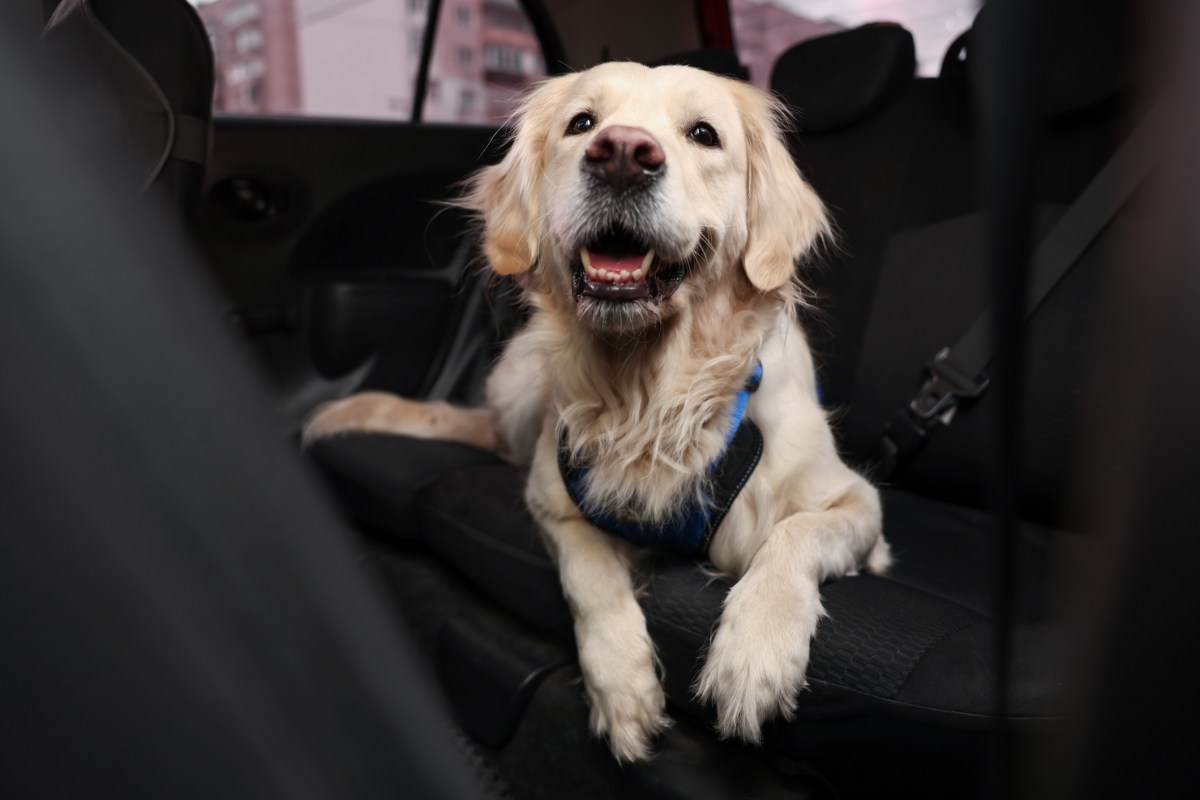As summer temperatures continue to climb, so does the risk of a silent, swift and potentially deadly condition for our furry companions: heatstroke.
“Even on what people think is a mild day, it can be dangerous for pets,” said Dr. Lauryn Benson, medical director at Veterinary Emergency Group in Carle Place. “I’ve seen dogs go into heatstroke in 72-degree weather just from being overexerted.”
Heatstroke or hyperthermia occurs when a dog’s internal temperature rises above 105.8 degrees and the body can no longer dissipate heat effectively. Unlike humans, dogs don’t sweat — their primary method of cooling is panting. When that’s not enough, their bodies begin to shut down.
There are three primary types of heatstroke in dogs. The most common is classic heatstroke, which occurs from exposure to hot and humid conditions, such as being left in a car or outdoors without shade. Exertional heatstroke stems from excessive physical activity, even in moderate temperatures. The third type can result from underlying medical issues, such as seizures or muscle tremors.
“All dogs are at risk, but some are much more vulnerable,” Benson explained. “Short-nosed breeds like Bulldogs and Frenchies, as well as overweight dogs and large, thick-coated breeds like Newfoundlands and Great Pyrenees, are especially prone to overheating — sometimes in under 30 minutes.”
The signs of heatstroke can come on quickly. Symptoms include collapse, rapid or labored breathing, lethargy, vomiting or diarrhea (sometimes with blood) and unusual bruising on the skin or gums. A dog’s gums or tongue changing color — from bright red to pale, bluish or gray — is a serious red flag.
“If you touch your dog and they feel extraordinarily hot or if they’re panting and just not settling down after five to seven minutes indoors, that’s the time to act,” Benson said. “Any changes in gum color or bruising should be considered an emergency. Don’t wait — get in the car and call ahead to your vet.”
VEG hospitals are open 24/7, including the Carle Place location, which allows walk-ins at any hour.
“We’re always here,” Benson said. “What makes VEG unique is that we don’t separate people from their pets. You stay with your animal through treatment, which we believe helps both the pet and the owner stay calmer.”
Treatment for heatstroke is intensive. Depending on the severity, it can involve intravenous fluids, plasma transfusions, blood pressure support, gastroprotectants and, in some cases, antibiotics or anti-seizure medications. Recovery is possible, but the prognosis varies — and in some instances even aggressive care may not be enough.
“The best treatment is prevention,” Benson emphasized.
She recommends walking dogs early in the morning or after sundown to avoid the midday heat. Access to cool, shaded areas and plenty of fresh water is also essential.
“Try to avoid long outings between sunup and sundown. If your dog absolutely needs exercise, get up early before the sun rises and walk them then. In the evening, wait until the sun has gone down again.”
There’s also a wave of social media trends promising cooling hacks for pets, but not all are vet-approved.
“Ice baths? Please don’t,” Benson said. “They make things worse. When you plunge an overheated dog into ice water, the blood vessels in their limbs constrict and that prevents heat from moving away from the body’s core. It traps the heat inside.”
Freezer treats and dog-friendly popsicles might help momentarily, but won’t bring down core temperature meaningfully. “Sure, it’s like eating ice cream — it feels good for a few minutes, but it’s not cooling you down,” she said.
If you suspect heatstroke, the best course of action is to hose your dog down with cool or tepid water — not ice water — and get into an air-conditioned car while heading to the nearest emergency vet. Call the clinic ahead so they can prepare.

Never, under any circumstances, leave a dog in a parked car. On a 90-degree day, a car’s interior can reach 109 degrees in just 10 minutes — even with the windows cracked. In 30 minutes, that temperature can soar above 130 degrees.
Benson said many heatstroke cases don’t come from negligence, but from misunderstanding. “Sometimes people don’t have strong air conditioning at home. Or they think it’s okay to go for a short hike at 75 degrees without realizing how fast their dog is tiring.”
She says education and awareness are the most effective tools.
“A lot of people read about this after a heatwave and realize, ‘Oh wow, I might have missed some signs last week.’ That’s why these conversations are never too late. We’ve got more hot days ahead — and this is when people need to be extra vigilant.”
For anyone in Nassau County or nearby areas, VEG’s Carle Place location offers emergency care around the clock. Their team is trained for rapid response and unlike many traditional ERs, owners remain with their pets during treatment.
“Our goal is to make emergency care less stressful,” Benson said. “Because when your pet is in danger, you shouldn’t have to say goodbye at the exam room door.”
For more information or in case of emergency, call Veterinary Emergency Group Carle Place at 516-359-4644.



































